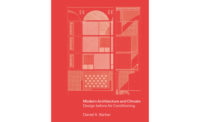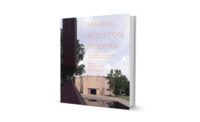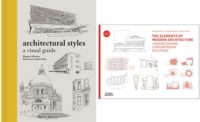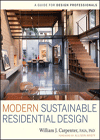Review of 'Napoli Super Modern'
by Local Architecture Network and Le Laboratoire R.A.A.R.

Napoli Super Modern, edited by LAN Local Architecture Network, Benoît Jallon, Umberto Napolitano, and Le Laboratoire R.A.A.R. Park Books, 232 pages, $50.
When one thinks of great Italian architecture, Naples is not necessarily the first destination that springs to mind. Even before the 1861 defeat of Francis II of the Kingdom of the Two Sicilies, when Naples fell from being the capital of an independent country to a mere port in a united Italy, its buildings had generally been rather derivative, often designed and built by men either born or trained elsewhere. This isn’t to say that the city’s architecture is bad or unworthy of consideration (far from it), merely that great originality of design was never Naples’s forte. With the title Napoli Super Modern, this book—edited by Paris-based architects LAN, whose principals are Frenchman Benoît Jallon and the Naples-trained Umberto Napolitano—might lead you to think that you’d missed something where the architecture of the past century is concerned. Your expectations will soon be tempered, but the book, like the city’s 20th-century buildings, is still worth a little detour.
Napoli Super Modern focuses on 18 buildings constructed between 1930 and 1960. The choice is unexplained—Napolitano’s personal preferences, one suspects, after reading his introduction. Nor are we told why the arbitrary timeline was chosen, 1960 being a cutoff date that excludes, for example, Franz di Salvo’s notorious Vele di Scampia housing project (begun in 1962, currently being demolished). Just as curious is the omission of the celebrated Casa Malaparte, on the island of Capri off the coast of Naples (Curzio Malaparte and Adalberto Libera, 1943), which, though it falls into the period covered, is barely alluded to. Too obvious and well-known to bother with, perhaps? Presumably the same was thought true of Luigi Cosenza’s luminous Olivetti factory (1954) in Pozzuoli, a suburb of Naples, also tantalizingly alluded to but not shown.
Cosenza is honored nonetheless, since he was involved with three of the featured buildings: the Fish Market (1935), the Villa Oro (with Bernard Rudofsky, 1937), and the Cesare Battisti housing project (1947). A graduate of the engineering school in Naples and a lifelong anti-fascist, he is generally credited with introducing Modernism to the city with his vast, barrel-vaulted fish-market building. Another architect featured thrice is Marcello Canino, a graduate of Naples’s Royal Polytechnic, who became “a central figure in the fascist power system” and would organize the city’s 1939 Mostra d’Oltremare (colonial exhibition). The political difference can be felt in their buildings: where Canino is all Roman bricks, travertine, Classicism, and other obvious symbols of italianità, Cosenza is international to the point of universalism. A later important figure was Stefania Filo Speziale, a pupil of Canino’s, who was one of Naples’s first female architects and part of the trio that designed the Palazzo Della Morte condominium (1960), which makes brilliant use of a difficult hillside site. Faced with such a disparate selection of projects, Napolitano pleads an unconvincing case for Neapolitan specificity, while Manuel Orazi (one of several essayists), entertainingly sets the city’s modern architecture in a wider national and international context.
Frustrations abound, though. The omissions. The competent but not-quite-good-enough English translation (an Italian edition is available from Quodlibet). The images—Cyrille Wiener’s photos are fine as far as they go, but so much isn’t shown of these buildings, and the drawings (beautifully done) and photographs are scattered in such a way that you’re forced to flip back in search of the relevant plates when reading the project descriptions at the back of the book (by Andrea Maglio). But most of all, the hybrid concept hovers annoyingly between the serious in-depth study—which would have implied a volume of greater length and ambition—and the introductory survey, which would have required a more comprehensive approach. But, despite all that, Napoli Super Modern succeeds in making this reader yearn to hop on a plane and rediscover, among the city’s older treasures, its 20th-century architecture, and appreciate it anew.






